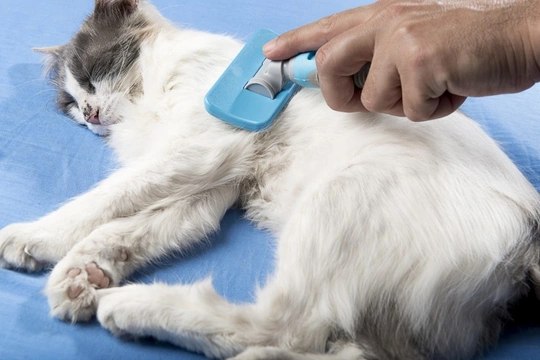
Grooming tips for the owners of longhaired cats
Longhaired cats are very appealing to cat lovers for a whole variety of reasons, not least that they are beautiful to look at and soft and luxurious to stroke! However, caring for a longhaired cat can take a little more time and effort than caring for one of their shorthaired counterparts, and it is important to understand this before buying or adopting one-and make sure that you can get to grips with things!
In this article, we will look at why grooming a longhaired cat is so important, as well as sharing some tips and advice on how to do it best. Read on to learn more.
More about long hair
Long fur is something that is often associated with specific breeds and types of pedigree cats, such as the Persian and the Turkish Van; but not all longhaired cats are pedigree, and plenty of moggies are longhaired as well! This may be due to having ancestry with a longhaired cat breed in the mixture somewhere, or because of a minor mutation that can lead to a longhaired cat being born in a shorthaired litter, who can then pass on that gene for longer hair to their own offspring.
While you might think that long hair or short hair are fairly binary options, there are actually four different coat types that domestic cats can display; these are shorthaired, longhaired, semi-longhaired, and hairless, and each of them need different types of care and maintenance!
A cat that is semi-longhaired has, as you might expect, hair that is longer than the norm but not quite long enough to be classed as fully longhaired, and the fur will also generally be slightly finer and less dense than a true longhaired cat.
Cats that have either long or short hair also generally have at least two and possibly three different textures within their coats as well, ranging from top-level guard hairs to the main coat and in some cases, a thick, dense base coat as well.
Learning to recognise the different types of coat styles and textures that can be found in cats and identifying what type of coat your own cat has is very helpful when it comes to their grooming and care!
Brushing and combing
First of all, while shorthaired cats don’t strictly need to be groomed as a general rule (although it can be good for them!) longhaired cats certainly do, and without grooming and attention from their owners, they are apt to get quite unkempt and knotted up, which will make them look and feel miserable.
This means that you should invest in the right grooming tools for your cat’s fur type, using a brush and comb that have been chosen to suit the type of fur that they have, and possibly other tools too, like a slicker brush.
How often you actually need to groom your cat is something that will generally become apparent to your early on-some longhaired cats need daily brushing, while others might need assistance just once or twice a week.
When you groom your cat, it is important that you groom the whole coat, getting right down to the skin through all of the layers of fur, to remove knots and tangles (or stop them from forming) and to stimulate the circulation.
Some of the areas that are particularly important to pay attention to can also be the hardest to groom-such as the area below the ears, in the armpits, and under the belly. Be very careful and gentle in these potentially sensitive areas!
Also, while it is sometimes a good idea to use conditioning sprays and other products that can help to untangle the coat and keep it smooth on dogs, you should not use any products on your cat’s fur, as they won’t like it and will work hard to lick it off.
Do longhaired cats need bathing?
As a general rule, only hairless cats need to be bathed on a regular basis, and most other cats will probably go through their whole lives without needing to be bathed, as cats are naturally so fastidious about their own grooming.
This is also true for longhaired cats, and they do not need to be bathed as a matter of course-only if they have something sticky, toxic or otherwise hard to remove on their coats.
Checking your cat over
The nature of the fur of longhaired cats means that their fur will often mask problems, such as cuts, grazes, lumps and bumps, and grooming your cat provides a valuable opportunity for you to check your cat over and make sure that nothing is amiss with their skin or coat.
Common problems
At certain times of the year, longhaired cats that go outside are particularly likely to come in with all kinds of detritus in their fur, from burrs to brambles to whatever else they happen to brush past!
Removing spiky particles such as burrs can be challenging and time consuming, and it is best to pick these out by hand, as brushing will pull on the fur and also, not remove them effectively and potentially make the fur even more tangled.



